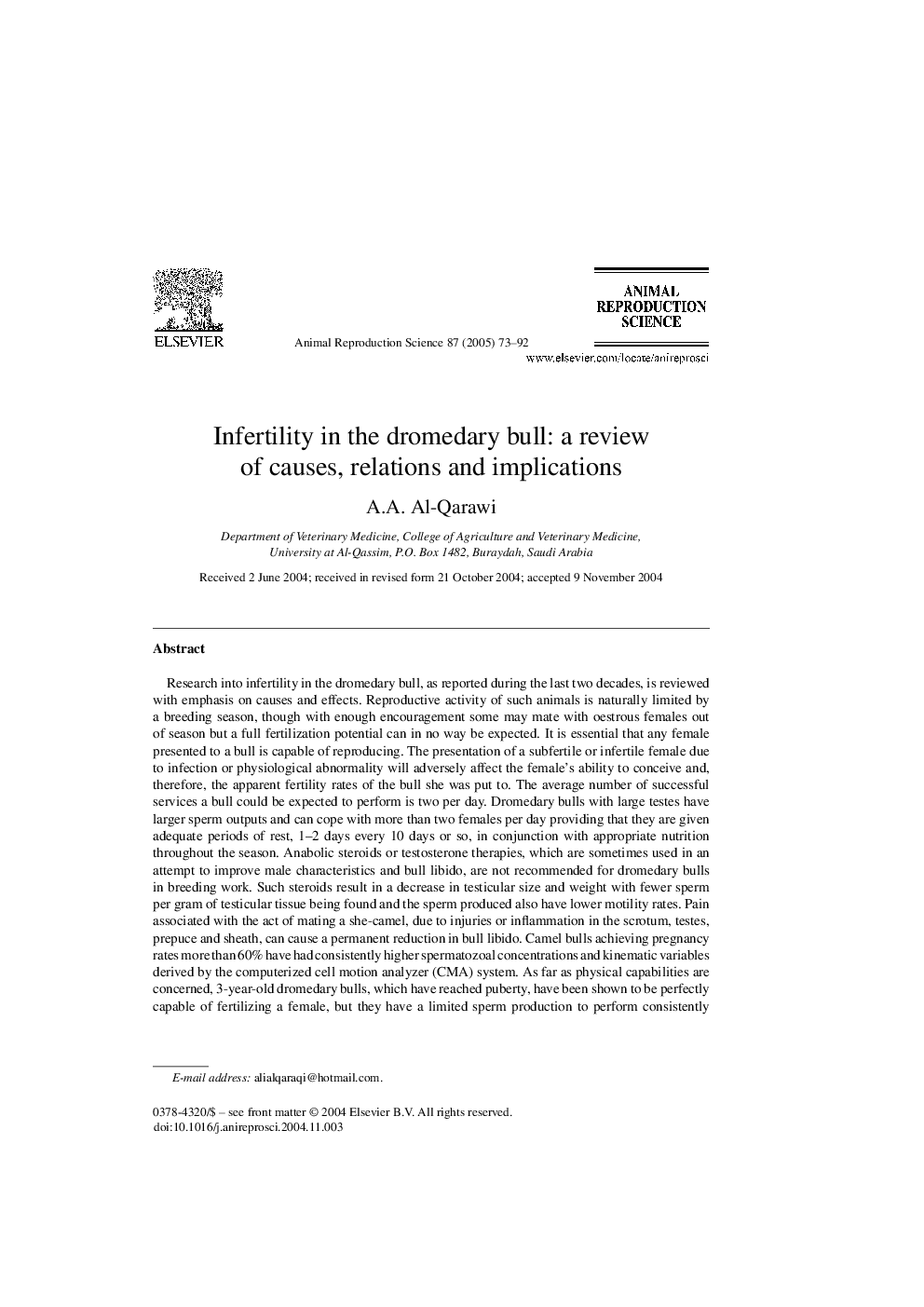| کد مقاله | کد نشریه | سال انتشار | مقاله انگلیسی | نسخه تمام متن |
|---|---|---|---|---|
| 9900316 | 1544840 | 2005 | 20 صفحه PDF | دانلود رایگان |
عنوان انگلیسی مقاله ISI
Infertility in the dromedary bull: a review of causes, relations and implications
دانلود مقاله + سفارش ترجمه
دانلود مقاله ISI انگلیسی
رایگان برای ایرانیان
موضوعات مرتبط
علوم زیستی و بیوفناوری
علوم کشاورزی و بیولوژیک
علوم دامی و جانورشناسی
پیش نمایش صفحه اول مقاله

چکیده انگلیسی
Research into infertility in the dromedary bull, as reported during the last two decades, is reviewed with emphasis on causes and effects. Reproductive activity of such animals is naturally limited by a breeding season, though with enough encouragement some may mate with oestrous females out of season but a full fertilization potential can in no way be expected. It is essential that any female presented to a bull is capable of reproducing. The presentation of a subfertile or infertile female due to infection or physiological abnormality will adversely affect the female's ability to conceive and, therefore, the apparent fertility rates of the bull she was put to. The average number of successful services a bull could be expected to perform is two per day. Dromedary bulls with large testes have larger sperm outputs and can cope with more than two females per day providing that they are given adequate periods of rest, 1-2 days every 10 days or so, in conjunction with appropriate nutrition throughout the season. Anabolic steroids or testosterone therapies, which are sometimes used in an attempt to improve male characteristics and bull libido, are not recommended for dromedary bulls in breeding work. Such steroids result in a decrease in testicular size and weight with fewer sperm per gram of testicular tissue being found and the sperm produced also have lower motility rates. Pain associated with the act of mating a she-camel, due to injuries or inflammation in the scrotum, testes, prepuce and sheath, can cause a permanent reduction in bull libido. Camel bulls achieving pregnancy rates more than 60% have had consistently higher spermatozoal concentrations and kinematic variables derived by the computerized cell motion analyzer (CMA) system. As far as physical capabilities are concerned, 3-year-old dromedary bulls, which have reached puberty, have been shown to be perfectly capable of fertilizing a female, but they have a limited sperm production to perform consistently throughout the season in a large herd. By 4.5-5.0 years of age, they are capable of producing adequate numbers of sperm to mate as many as females as an adult bull but fertilizing capacity is not attained until 6 years of age on average. Hyperoestrogenaemia, associated with autoimmune thyroiditis and trypanosomiasis, suppresses the secretion of testicular testosterone and augments the release of testicular histamine, which appears mandatory for quantitative reduction/loss of advanced spermatogenic cells in infertile dromedary bulls.
ناشر
Database: Elsevier - ScienceDirect (ساینس دایرکت)
Journal: Animal Reproduction Science - Volume 87, Issues 1â2, June 2005, Pages 73-92
Journal: Animal Reproduction Science - Volume 87, Issues 1â2, June 2005, Pages 73-92
نویسندگان
A.A. Al-Qarawi,